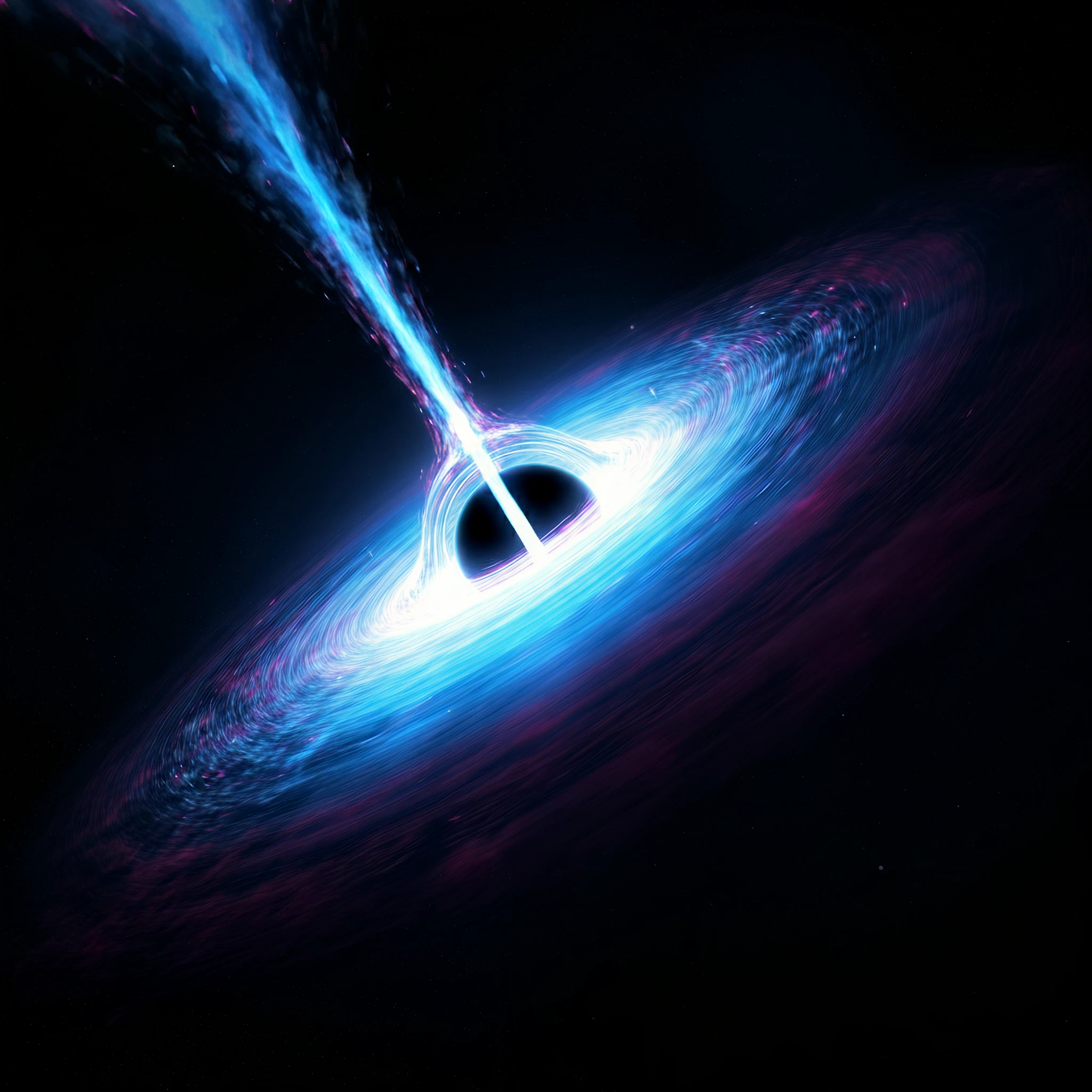NASA’s Imaging X-ray Polarimetry Explorer (IXPE) has made a groundbreaking discovery about black hole jets, providing vital new insights that challenge long-held scientific theories. By examining the blazar BL Lacertae, this innovative mission has identified the mechanisms behind X-ray generation in extreme cosmic environments, revolutionizing our understanding of how energy behaves around supermassive black holes.
What Are Black Hole Jets?
Black hole jets are powerful streams of charged particles ejected at nearly the speed of light from the vicinity of a supermassive black hole. These jets, made visible in multiple wavelengths including X-rays, are critical to understanding black holes and the immense energy they produce. Despite decades of study, scientists have long debated the exact mechanisms responsible for these X-ray emissions.
The Breakthrough Discovery by IXPE
For the first time, NASA’s IXPE satellite, in collaboration with ground-based optical and radio telescopes, has solved the mystery of how X-rays are generated in black hole jets. Observing the jet from the blazar BL Lacertae, IXPE revealed that electrons—not protons as previously considered possible culprits—are the source of the X-rays. This occurs due to a phenomenon known as Compton Scattering.
What Is Compton Scattering?
Compton Scattering happens when a photon (a particle of light) collides with a charged particle, such as an electron, and either gains or loses energy. IXPE’s observations showed that electrons moving at near-light speeds scatter photons of infrared light, boosting their energy to X-ray wavelengths.
How IXPE Solved the Puzzle
The groundbreaking data came from IXPE’s ability to measure polarization, a property of light that indicates the orientation of its electromagnetic waves. By comparing the polarization of X-rays and optical light from the blazar, scientists determined that the X-rays had far lower polarization levels (less than 7.6%) than the highly polarized optical light. This critical detail confirmed that the X-rays were generated through electron-photon interactions, effectively ruling out proton-based mechanisms.
Why This Discovery Matters
- New Understanding of Energy Transfer
The findings shed light on how energy is transferred in some of the universe’s most extreme environments. It shows how tiny particles like electrons can amplify photons’ energies to produce high-energy X-rays.
- Challenging Existing Theories
For years, scientists debated whether protons or electrons generated the X-rays in these jets. IXPE has definitively answered this question, reshaping scientific perspectives on black hole jet composition.
- Technological Achievement
IXPE’s capabilities as the only satellite currently able to measure X-ray polarization highlight a significant leap forward in space technology and X-ray astronomy.
The Unique Case of BL Lacertae
BL Lacertae, one of the first blazars discovered, was the centerpiece of this study. During IXPE’s observation period in November 2023, the blazar unexpectedly exhibited exceptionally high optical polarization levels (47.5%), the most recorded for any blazar in three decades. This coincidental event provided ideal conditions for IXPE to study the relationship between optical and X-ray polarizations.
Implications for Future Research
The results from IXPE’s investigation of BL Lacertae open the door for further studies:
- Identifying more cases of extreme X-ray polarization in other black hole jets.
- Exploring how black hole jets evolve over time and their influence on surrounding cosmic environments.
- Developing advanced satellite technology to refine our understanding of other interactions within black hole systems.
According to Steven Ehlert, project scientist for IXPE, “Blazars are full of surprises. One of our next goals will be to observe as many of these unique celestial phenomena as possible.”
IXPE’s Role in Advancing Astrophysics
Launched on December 9, 2021, IXPE was designed to investigate cosmic mysteries like black hole jets. Its advanced polarization-measuring technology is a game-changer for understanding not just black holes, but also neutron stars, supernovae remnants, and other high-energy astronomical objects.
Enrico Costa, one of the scientists behind the IXPE mission, remarked, “IXPE has solved another black hole mystery and continues to challenge and expand existing knowledge within astrophysics.”
Closing Thoughts
NASA’s IXPE mission represents more than just a technological feat. It is a testament to humanity’s ongoing curiosity about the vast, dynamic universe and a key step toward unraveling its most elusive mysteries. By identifying X-ray-generating particles in black hole jets, IXPE shows how cutting-edge technology can revolutionize our understanding of the cosmos.
For science enthusiasts and researchers alike, IXPE’s findings underline the power of collaboration between groundbreaking technology and creative scientific inquiry. The universe still has many secrets, but with tools like IXPE, we’re closer than ever to unlocking them.








